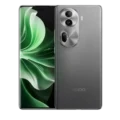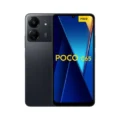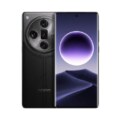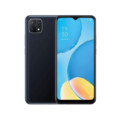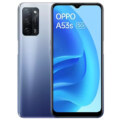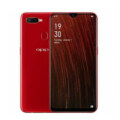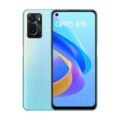- Home
- All Mobile
- Oppo
- Oppo Pad 4 Pro
Oppo Pad 4 Pro



Specifications
Price in Bangladesh
| Expected Price | Coming soon |
General
| Device Type | Smartphone |
| Released | July, 2025 |
| Status | Available |
Hardware & Software
| Operating System OS => Every computer system run on a base software called Operating System (OS). Operating System controls all basic operations of the computer (such as smartphone, PDAs, tablet computers and other handheld devices). The Operating System allows the user to install and run third party applications (apps), apps are used to add new functionality to the device. | Android |
| OS Version | v14 |
| Chipset Chipset is a group of integrated circuits designed to perform one or a more dedicated functions, often with real time computing constraints, Popular smartphones are equipped with more advanced embedded chipsets that can do many different tasks depending on their programming. | Qualcomm SM8650-AB Snapdragon 8 Gen 3 (4 nm) |
| CPU CPU (Central Processing Unit) mostly known as processors, CPU processes instructions in order to carry out certain functions that make your device operate properly. Processors are often described as the brain of computers, smartphones and tablets, Smartphones and tablets rely on processors to carry out their every task, Processors are an incredibly important factor in selecting any type of computing device, including your smartphone. | - |
| GPU GPU (Graphics Processing Unit) is a single-chip processor designed to rapidly manipulate and alter memory to accelerate the creation of images in a frame buffer intended for output to a display, This includes things such as lighting effects, object transformations, and 3D motion. | - |
| RAM (Memory) RAM (Random Access Memory) is a type of computer memory that can be accessed randomly, any byte of memory can be accessed without touching the preceding bytes that allows information to be stored and accessed quickly from random locations. RAM is the most common type of memory found in computer systems, smartphones, tablets and other electronic devices. | 8 GB, 12 GB, 16 GB |
Design
| Dimensions | - |
| Weight | - |
| Colors |
Blue, Gold |
| Build Material | Glass front, aluminum frame, aluminum back |
Display
| Display Type Display Technology => A number of display technologies and types used in mobile phones => TFT (Thin Film Transistor), IPS (In-Place Switching), OLED (Organic Light Emitting Diode), AMOLED (Active-Matrix Organic Light-Emitting Diode), Super AMOLED (an even advanced version of AMOLED), Resistive Touchscreen (Resistive touchscreens contain two layer of conductive material with a very small gap between them which acts as a resistance), Capacitive Touchsceen (Capacitive touchscreen technology consists of a layer of glass coated with a transparent conductor) | IPS LCD |
| Size | 12.1 inches |
| Resolution | 2120 x 3000 pixels (~304 ppi density) |
| HDR 10 / HDR+ support |
Rear Camera
| Camera Setup | Single |
| Main Camera | 13 MP |
| OIS | |
| Video | 4K@30fps, 1080p@30ps, gyro-EIS |
Front Camera
| Camera Setup | Single |
| Secondary |
8 MP |
| Video | 1080p@30fps |
Battery
| Battery Type Battery Type => Cell phones run on various kinds of batteries depending on the manufacturer, phone size or shape and features. There are basically four types of cell phone batteries => Lithium Polymer, Lithium Ion, Nickel Metal Hydride and Nickel Cadmium. | Li-Ion (Lithium Ion) |
| Placement | Non-removable |
| Capacity Battery Capacity is a measure (typically in Amp-hr) of the charge stored by the battery, and is determined by the mass of active material contained in the battery. The battery capacity represents the maximum amount of energy that can be extracted from the battery under certain conditions. | 9510 mAh |
Storage
| Storage Capacity | 256 GB, 512 GB, 1 TB |
| USB OTG |
Network
| 2G Network |
N/A |
| 3G Network |
N/A |
| 4G Network |
N/A |
| SIM SIM (Subscriber Identity Module) is a small card that contains mobile network subscriber's account information. This allows the phone using the card to attach to a mobile network. The SIM card is most commonly associated with GSM and UMTS mobile networks. Moving a SIM card from one phone to another allows a subscriber to switch mobile phones without having to contact their mobile network carrier. SIM cards can also be used by a phone to store limited amounts of data, such as phone numbers and text messages. | Standard SIM |
Data
| GPRS GPRS (General Packet Radio Service) is a packet oriented mobile data service on the 2G and 3G cellular communication system's global system for mobile communications (GSM), Generally, GPRS is used for the purpose of wireless data transfer, such as sharing pictures and videos or browsing the Internet via a mobile phone connection. | |
| EDGE EDGE (Enhanced Data GSM Environment) is a wireless network technology generally considered the next step in the 2G network offers data transfer rates up to four times faster than ordinary GSM networks, Generally, EDGE is used for the purpose of wireless data transfer, such as sharing pictures and videos or browsing the Internet via a mobile phone connection. | |
| Speed | No |
| Web Browser Web Browser => a web browser is a software application used to locate, retrieve and display content on the World Wide Web, including Web pages, images, video and other files, The primary function of a web browser is to render HTML, the code used to design or markup webpages. | HTML5 |
Messaging
| SMS SMS (Short Messaging Service) is a text messaging service component of phone, Web, or mobile communication systems. It uses standardized communications protocols to allow mobile phone devices to exchange short text messages over the networks. | No |
| MMS MMS (Multimedia Messaging Service) is a standard way to send messages that include multimedia content (audio clips, video clips and images) to and from mobile phones over wireless networks using the WAP protocol. |
Connectivity
| Bluetooth Bluetooth is a wireless communications technology for exchanging data between mobile phones, headsets, computers and other network devices over short distances without wires, Bluetooth technology was primarily designed to support simple wireless networking of personal consumer devices. | 5.4, A2DP, LE |
| Wi-fi Hotspot | |
| Infrared Infrared connectivity is an old wireless technology used to connect two electronic devices. It uses a beam of infrared light to transmit information and so requires direct line of sight and operates only at close range. | |
| USB | USB Type-C 2.0, OTG, accessory connector |
| NFC NFC (Near field communication) is a set of standards for smartphones and similar devices to establish peer-to-peer radio communications with each other by touching them together or bringing them into proximity, usually no more than a few inches. |
Media
| FM Radio | No |
| Loudspeaker | Yes |
| 3.5mm Jack | No |
Sensors & Security
| Fingerprint Sensor |
More
| Made By | China |
Performance Tests
Oppo Pad 4 Pro Price in Bangladesh
The Oppo Pad 4 Pro is expected to launch in Bangladesh soon, with an estimated starting price that’s yet to be officially announced. However, based on its specifications and global trends, the pricing may vary depending on the storage option you choose—256GB, 512GB, or a massive 1TB variant.
This upcoming tablet from Oppo aims to make a strong impression with its premium design and powerhouse performance. Featuring a large 12.1-inch display with HDR10+ support, the latest Snapdragon 8 Gen 3 processor, and a robust 9510mAh battery with 67W fast charging, the Pad 4 Pro is designed for productivity, entertainment, and gaming on the go. Running on Android 14, this high-end tablet caters to users seeking a flagship experience in a sleek, aluminum-clad package.
Oppo Pad 4 Pro Specifications
Display and Design
The Oppo Pad 4 Pro boasts a stunning 12.1-inch IPS LCD display, offering a sharp resolution of 2120 x 3000 pixels with an impressive pixel density of approximately 304 ppi. Whether you’re streaming videos, browsing the web, or sketching ideas, the display ensures vibrant colors and sharp details. It also supports HDR10+, enhancing contrast and color accuracy for a more immersive viewing experience.
In terms of design, the tablet features a glass front, aluminum frame, and aluminum back, giving it a sleek, premium feel. Available in Blue and Gold, it presents a sophisticated yet modern look that appeals to both professionals and casual users. While Oppo hasn’t confirmed the weight and exact dimensions yet, it’s clear the Pad 4 Pro is designed to be both durable and stylish.
Performance and Processor
Under the hood, the Oppo Pad 4 Pro is powered by the Qualcomm Snapdragon 8 Gen 3 (4 nm) chipset, one of the most advanced processors on the market. This flagship-level processor ensures lightning-fast performance, whether you’re multitasking between apps, playing high-end games, or using resource-intensive productivity tools.
The device is expected to be available in 8GB, 12GB, and 16GB RAM variants, paired with 256GB, 512GB, or 1TB of internal storage. While there’s no mention of expandable storage, these options provide ample space for files, apps, and multimedia content. Thanks to its cutting-edge hardware, users can expect seamless performance in gaming, video editing, and day-to-day multitasking.
Camera and Video
For photography enthusiasts, the Oppo Pad 4 Pro comes equipped with a 13MP rear camera, capable of shooting 4K videos at 30fps and 1080p videos, complemented by gyro-EIS for smoother footage. While it’s a single-camera setup, it’s optimized for crisp photos and stable video recording—perfect for virtual meetings or casual photography.
On the front, there’s an 8MP selfie camera, offering 1080p video recording at 30fps. Whether you’re attending video calls or snapping quick selfies, this front camera provides clear and balanced shots.
Battery and Charging
The 9510mAh Li-Ion battery is one of the highlights of the Oppo Pad 4 Pro, providing extended usage for media consumption, productivity, and gaming. It supports 67W fast charging, ensuring minimal downtime between charges. Although wireless charging isn’t mentioned, the combination of a large battery and rapid charging makes it highly reliable for heavy users.
Connectivity and 5G Support
In terms of connectivity, the Oppo Pad 4 Pro focuses on modern wireless solutions. While it doesn’t support cellular networks like 2G/3G/4G/5G, it offers robust Wi-Fi connectivity, making it ideal for home, office, or public network use. It also includes Bluetooth 5.4 with A2DP and LE for seamless pairing with accessories like wireless headphones and keyboards.
The USB Type-C 2.0 port supports OTG and accessory connections, expanding its versatility for data transfer and peripheral devices. While NFC and infrared aren’t available, it compensates with dependable GPS and Wi-Fi hotspot features.
Additional Features
The Oppo Pad 4 Pro runs on Android 14, delivering an updated and smooth user experience. Although the UI skin wasn’t specified, Oppo’s software typically includes thoughtful customizations for better productivity and media enjoyment.
For security, the tablet features a fingerprint sensor. Additional features include stereo speakers for an enhanced audio experience, though it lacks a 3.5mm headphone jack and FM radio support. Still, with China manufacturing quality, it ensures high build standards and longevity.
Reason to Buy
Here are some of the best reasons to consider purchasing the Oppo Pad 4 Pro:
- Powerful Snapdragon 8 Gen 3 processor for flagship-level performance.
- Massive 12.1-inch HDR10+ display ideal for entertainment and productivity.
- Up to 16GB RAM and 1TB storage, perfect for multitaskers and professionals.
- Large 9510mAh battery with 67W fast charging keeps you going all day.
- Premium build quality with aluminum frame and sleek design.
- Android 14 for a modern and smooth software experience.
- Stereo speakers for immersive audio quality.
Verdict
The Oppo Pad 4 Pro is shaping up to be a flagship tablet that blends power, design, and functionality. With its cutting-edge Snapdragon 8 Gen 3 chipset, ample RAM and storage options, and a vivid HDR10+ display, it’s ideal for users who want a high-performance device for both work and play. Its large battery and fast charging make it suitable for on-the-go lifestyles, while its premium build ensures it looks and feels top-notch.
If you’re looking for a versatile, powerful Android tablet, especially for media consumption, productivity tasks, or casual gaming, the Oppo Pad 4 Pro is worth considering. It’s tailored for tech enthusiasts, creative professionals, and anyone seeking flagship features in a sleek package.
FAQ
Q: What is the expected price of the Oppo Pad 4 Pro in Bangladesh?
A: The official price hasn’t been announced yet, but it’s expected to vary based on storage options—256GB, 512GB, or 1TB.
Q: Does the Oppo Pad 4 Pro support 5G or SIM cards?
A: No, the Oppo Pad 4 Pro does not support cellular connectivity or SIM cards. It relies on Wi-Fi for internet access.
Q: What colors will be available for the Oppo Pad 4 Pro?
A: It will be available in Blue and Gold color variants.
Q: Can I expand the storage on the Oppo Pad 4 Pro?
A: There’s no official information about expandable storage, but it offers up to 1TB of internal storage.
Q: Does the Oppo Pad 4 Pro support fast charging?
A: Yes, it features 67W fast charging, allowing for quick recharges despite its large 9510mAh battery.
Q: What operating system does the Oppo Pad 4 Pro run on?
A: It runs on Android 14, offering the latest software features and improvements.
User Reviews
Disclaimer Note
We do not guarantee that the information of this page is 100% accurate and up to date.






